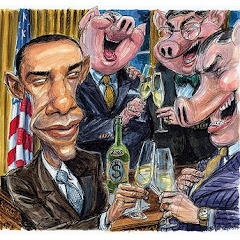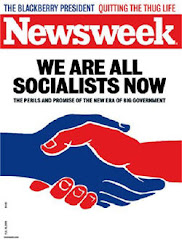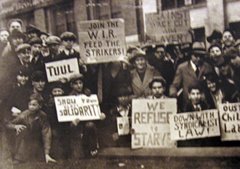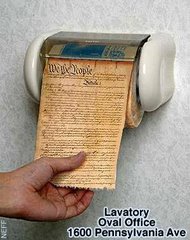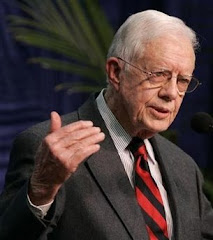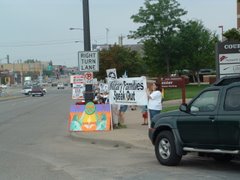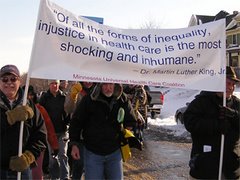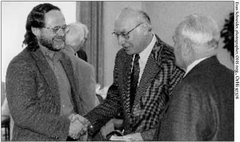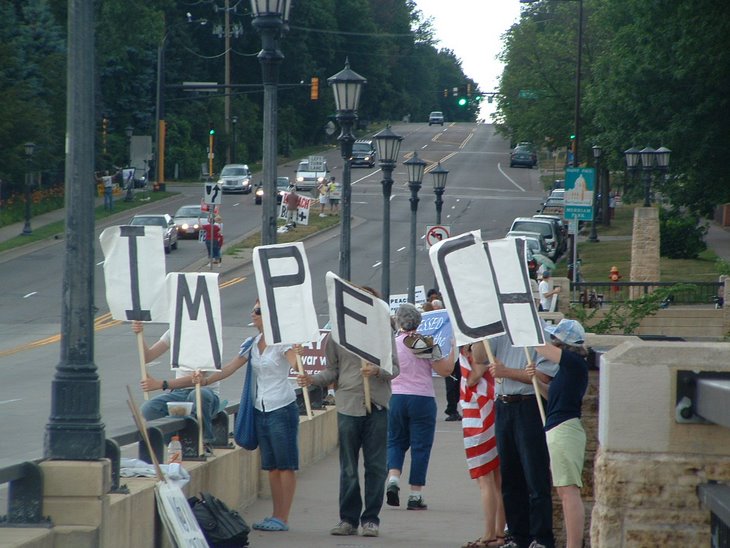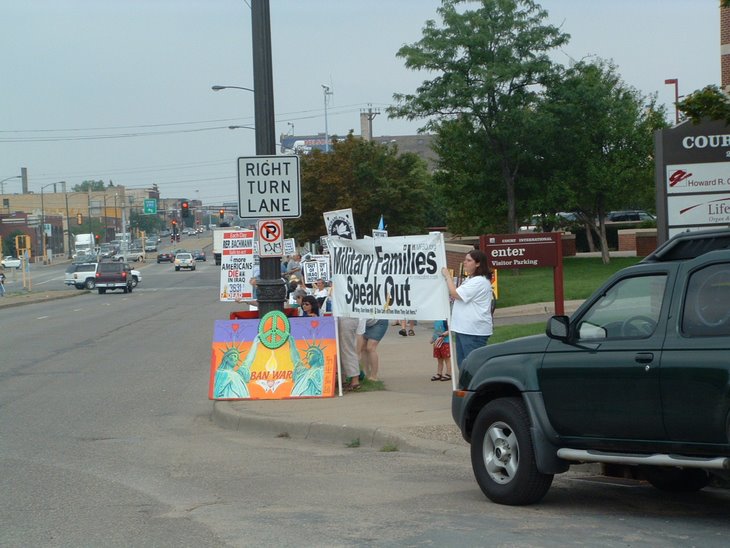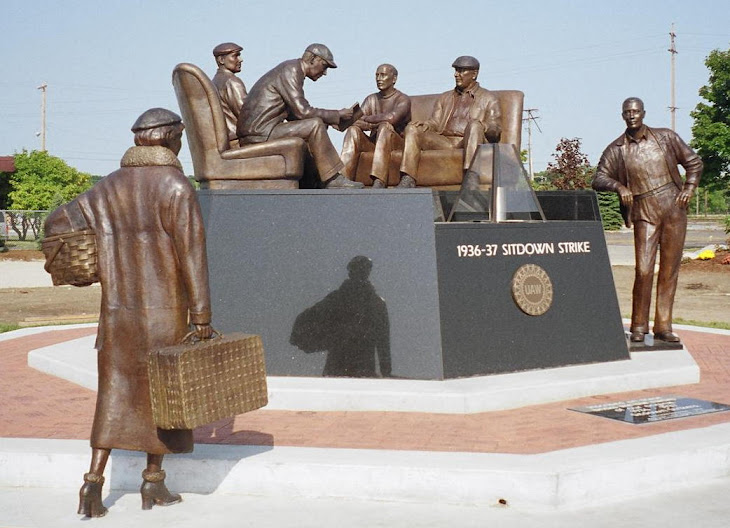Fifty years ago, President Lyndon Johnson stood before Congress and
declared war on poverty.
His plans included broadening the food stamp program, extending minimum
wage coverage, increasing education funding, and providing “hospital
insurance” for older Americans. Johnson spoke of millions of Americans
who lived on “the outskirts of hope,” and challenged the country to
“replace their despair with opportunity.”
Contrary to
conventional wisdom, American hasn’t lost the war on poverty. We stopped
fighting it. It’s time to take up the challenge Johnson issued 50 years
ago. We must not only renew the fight against poverty, but we must
fight for jobs, livable wages, and economic growth that benefits all.
What Works
The war on poverty was successful. We have the numbers to prove it.
Critics of
government anti-poverty efforts point to the current poverty rate as
evidence of their failure. When Johnson stood before Congress, the
national poverty rate was near 19 percent. After 50 years and trillions
of dollars spent fighting the war on poverty, the national poverty rate
is an unimpressive 15 percent.
Who can blame
them? It’s simple. It’s also wrong. The poverty measure was established
in 1963, and hasn’t changed since then. It only counts a family’s cash
income before taxes, and doesn’t take into account anti-poverty programs
that have lifted families out of poverty.
The Census Bureau solved this problem by introducing the
Supplemental Poverty Measure, which factors in the effect of anti-poverty programs.
These Census statistics
tell a different story: From 1963 to 1970, the poverty rate dropped
from 22.6 percent to 12.6 percent — a staggering reduction, in just six
years.
Poverty dropped
substantially from the start of Johnson’s anti-poverty offensive. What
made the difference? The very same “centralized, bureaucratic, top-down
anti-poverty programs” that Rep. Paul Ryan (R-Wis.) railed against this
summer during a House Budget Committee hearing on the War on Poverty.
- A recent University of Chicago/Notre Dame paper
by Bruce D. Meyer and James X. Sullivan, which looks at low-income
families’ consumption rather than income, and accounts for the impact of
anti-poverty programs found that:
- Poverty rates have declined steadily since the 1960s and 191970s, and dropped 12.5 percentage points since 1970.
- During the 1960s and 1970s, the tax code became friendlier to
low-income families. Tax cuts for low-income Americans, combined with
tax cuts for parents (the child tax credit) and the working poor (the
Earned Income Tax Credit), accounted for a lot of the drop in poverty.
In fact, the EITC pushed after-tax poverty down in the 1990s, and in
2011 kept 6 million out of poverty — including 3 million children.
- Programs like food stamps and unemployment insurance have made huge
difference in reducing poverty rates since the launch of the war on
poverty.
- These safety-net programs have helped reduce the percentage of
Americans living in poverty from 26 percent in 1967, to 16 percent in
2012.
- Without these safety-net programs, more Americans would be living in poverty today – 29 percent, compared to 27 percent in 1967.
- According to a study by the Agriculture Department, food stamps helped reduce the poverty rate by nearly 89 points during the recession.
Victories in the
war on poverty show us what works. The decades that followed the war on
poverty make it clear what doesn’t work.
What Doesn’t Work
“We fought a war
on poverty,” Ronald Reagan famously said, “and poverty won.” America
only fought a serious, well-funded war on poverty for a decade — even
less,
writes Michael Tomasky.
In the 1970s, the war on poverty began losing steam, and money that
might have funded the war on poverty was instead diverted to the war in
Vietnam.
With presidency
of Ronald Reagan, and rise of modern conservatism, the 1980s signaled a
backlash against anti-poverty programs. The declining poverty rate
plateaued, as the fates of anti-poverty programs ebbed and flowed. A new
war, of sorts, began.
Ronald Reagan
deployed the “welfare queen,” during his 1976 presidential campaign — an
’80s update of the Victorians’ “undeserving poor” in blackface — as
part of his mission to vilify welfare and welfare recipients, at the
expense of black women living in poverty. It was the opening shot in
what would become a full-fledged conservative “war on the poor.” Though
mild when compared to present-day conservative rhetoric about the poor,
it is echoed by every tea partier who
mocks the poor and every conservative who
blames the poor for their poverty.
In the 1990s,
“welfare reform” presented conservatives with a model. Passed by a
Republican Congress (with help from Democrats Who Should Have Known
Better ™), and signed by a Democratic president, the
1996 Personal Responsibility and Work Opportunity Act
marked a shift in the war on poverty. It ended welfare as an
entitlement, placed a five-year limit on federal benefits, and
block-granted programs to states.
Conservatives tout it as a success, but
“welfare reform” was a “catastrophic success”
at best. Welfare reform was only successful in getting people off the
welfare rolls. Those who were kicked off the rolls either found jobs
that paid too little, returned to welfare, or ended up with no income
and few resources.
“Welfare reform”
reduced the number of people receiving help, but did not reduce the
number of people who needed government assistance. That’s the “success”
on which Rep. Paul Ryan modeled his budget. It’s also the conservative
model for “reforming” the programs of the war on poverty, from Medicaid
to food stamps.
“Welfare reform,” in all its various forms, amounts to a surrender in the war on poverty.
Moving Forward
It’s too soon to
declare victory in the war on poverty, but it’s also too soon to admit
defeat. We are only halfway through this battle.
Without
anti-poverty programs, nearly 24 million more Americans would be living
in poverty. The poverty rate would rise to nearly 30 percent — almost
double the current rate.
Antipoverty
spending alone is not enough. These programs have been effective, but
they have had to work even harder to address the challenges faced by the
increasing number of people who are being denied the benefits of
economic growth in today’s economy. Unless we address those economic
realities, we’ll have to keep ratcheting up anti-poverty spending.
The war on
poverty must be matched with a fight for a more equitable economy, that
includes full employment, livable wages, and economic growth that
benefits all.
- Livable Wages. Low-wage jobs keep incomes low. Half of all
jobs in the U.S. now pay less than $35,000 per year. Many pay much less,
leaving workers unable to afford food, shelter, transportation and
medical care. Raising the minimum wage could lift 5 million out of
poverty, and reduce the poverty rate for adults aged 18 to 64.
- Full Employment. Right now, there are three unemployed
people competing for every job opening. Fighting for full employment
must go hand-in-hand with fighting poverty. It will require major
investment. But first, Democrats will to abandon complicity in
prioritizing deficit reduction over job creation, and get over their
fear of being labeled with “L Word.”
- Economic Growth. Full employment will require reviving
economic growth, so that everyone who wants or needs a job can find one.
Ending tax policies and trade agreements that make it easier for
businesses and corporations to send jobs and money overseas might be a
good place to start.
That poverty is
still with us doesn’t mean we’ve lost. It means we have more work to do.
The conservative response to poverty is to cut assistance and let the
chips fall where they may. Progressives must to fight to preserve
anti-poverty programs, and to create an economy that produces good jobs,
full employment and livable wages – an economy in which everyone has
opportunities to participate and to prosper.
My comment on the article:
Good article except there is only one way to determine what is poverty:
Do people have everything they are entitled to by birth as a human
right? If we were to use the United Nations' Universal Declaration of
Human Rights as our "measuring stick," poverty in this country would be
much worse than what the U.S. Census Bureau implies.
Wages and
any benefits derived must be considered against actual "cost-of-living"
factors as tracked by the United States Department of Labor's Bureau of
Labor Statistics which gives us a much better indication of living
standards than do the figures coming from the U.S. Census Bureau.
It is like the United States government operates like a crooked and
corrupt employer keeping two sets of books: one for the IRS the other
for stock-holders. Some of these employers keep a third set of books to
show the union at contract time.
We need a Minimum Wage that is a real living wage based on all cost of living factors.
At election time, politicians talk a good line about "jobs, jobs, jobs;" but, for all the talk, millions remain unemployed.
We are going to need a Full Employment Act which would require the
president and Congress to work together to attain and maintain full
employment if we ever hope to have full employment in this country. The
Full Employment Act of 1945 was an example of such legislation; we need
to revive calls for such advanced legislation--- call it the "21st
Century Full Employment Act for Peace and Prosperity" because unless we
end these dirty wars killing our jobs just like they kill people we will
never have the resources for the kind of massive government job
programs required that will put everyone to work at real living wages.
Here in Minnesota Democrats have a super-majority. Progressives from
all over the country should be demanding and insisting that this
Democratic super-majority here in Minnesota passes real living wage
Minimum Wage legislation tied directly to all cost-of-living factors,
indexed to inflation with periodic increases to improve the livelihoods
and standard of living for all working people.
Let's get very specif with articulating just what is required to solve our problems in a progressive manner.
We have had enough of this George Lakoff crap of properly framed
progressive policy directives enabling these politicians to campaign on
the promise of enacting living wages and then once elected they pull
this "bait and switch" bullshit on us by legislating "increases" in the
Minimum Wage which leave the Minimum Wage remaining a poverty wage.






























